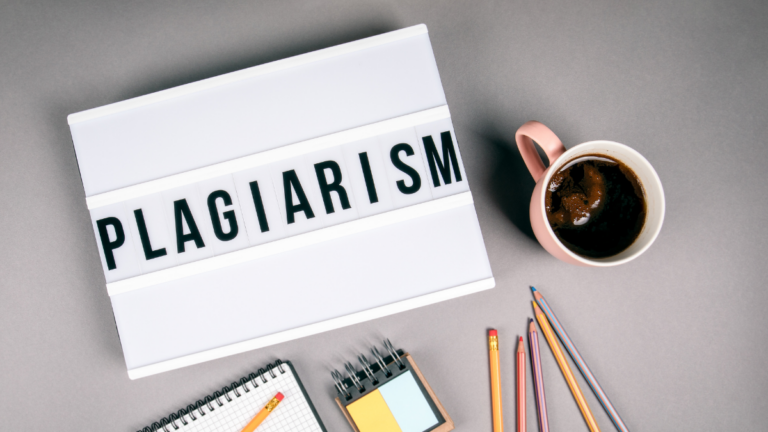When it comes to the production of content, originality and authenticity are essential components in the process of constructing trust and credibility. Plagiarism is defined as the practice of taking the work, ideas, or expressions of another person without giving that person fair credit for them. It has the potential to ruin a writer’s reputation and put the content’s integrity at risk. It is vital to have a solid understanding of the many forms of plagiarism and to develop techniques that are both effective and efficient. This is in order to keep ethical standards and produce material of a high quality. In this extensive article, we will look into the many types of plagiarism and give content authors with effective methods to avoid falling into this ethical trap.
1. Plagiarism in Its Purest Form
Direct plagiarism is sometimes referred to as verbatim plag. It is the practice of duplicating the work of another person word for word. It is without using quote marks or providing the appropriate reference. This particular kind of plagiarism provides little room for interpretation. It is a blatant infringement of the rights associated with intellectual property.
Method for Sidestepping:
Always give credit to the original author of a quote and put it in quotation marks when you share it. Include correct citations inside the text itself, as well as a complete reference either in your bibliography or reference list.
2. Plagiarism by Oneself
When a writer repurposes or recycles their own previously published work without admitting it as such, they are committing self-plagiarism. This is also known as autoplagiarism. Both terms are used interchangeably. Even though it may not include duplicating the work of others, self-plagiarism is nevertheless considered to be in violation of academic and ethical norms.
Method for Sidestepping:
If you are utilising earlier work that you have done, be sure to explicitly cite its source. Get permission from the publishers if required. Even while discussing issues that are already well known, you should make it a point to provide new ideas and viewpoints.
3. Plagiarism Committed Through Paraphrasing
Rewording the work of another person but preserving the original organization and ideas without giving due credit is an example of the kind known as paraphrasing. The meaning and structure of the original document are unaffected, despite the fact that the words could be modified.
Method for Sidestepping:
Make sure that you communicate the meaning of the original ideas in your own words while still providing credit to the original author when you paraphrase. Check that the material has been correctly changed by comparing your version to the original.
4. Plagiarism in the Form of Mosaic
Plagiarism is described as mosaic plagiarism, patchwork plagiarism, or incremental plagiarism. It occurs when many sources are combined to generate new material without giving credit to the original writers for their contributions. Other names for mosaic plagiarism include patchwork plagiarism and incremental plagiarism.
Method for Sidestepping:
When integrating information from a variety of sources, it is important to provide accurate citations for each individual source. Make it very clear that your personal ideas are distinct from the material that you’ve obtained.
5. Unintentional or Accidental Plagiarism
Plagiarism may occur when a writer mistakenly fails to credit sources correctly owing to oversight. Or a lack of information about how to properly cite sources. This is known as accidental plagiarism. Even if it was not deliberate, this still counts as plagiarism.
Method for Sidestepping:
Get yourself acquainted with the appropriate citation styles. Such as APA, MLA, or Chicago, depending on the industry that you work in. Before you put the finishing touches on your work, you should thoroughly verify all of your references and citations.
6. Plagiarism that is based on another source
Plagiarism that is based on the use of a single source entails copying text from that source and passing it off as one’s own work without providing the appropriate reference. The writer is prevented from exploring a variety of sources and ideas when they engage in this kind of plagiarism.
Method for Sidestepping:
Expand the scope of your investigation and draw from a number of different reliable sources. Always give credit to the original writers of the material you use and offer citations where relevant.
7. Stealing Someone Else’s Ideas
The act of duplicating or reproducing the original ideas, theories, or arguments of another person without giving them credit is known as idea plagiarism. Even if it does not include duplicating words for words, it is nevertheless an infringement of the creative contributions made by other people.
Method for Sidestepping:
Always give credit to the person who came up with an idea, even if you are going to express it using your own words. Give credit to the person or thing who came up with the idea, and include any sources that are pertinent.
8. Plagiarism in Smaller Quantities
The practice of giving credit to the original source but failing to disclose the full scope of the material that was copied is an example of incremental plagiarism, which is also referred to as inadequate attribution.
Method for Sidestepping:
Make sure that your attributions are complete and that you provide an honest account of the contributions made by the original source. Indicate in a transparent manner whether aspects of your material were inspired by other sources.
The final word
Keeping up with the constantly shifting environment of content production while adhering to ethical norms is of the utmost importance. The ability to traverse the intricate landscape of intellectual property with honesty and integrity requires content writers to have a solid understanding of the many forms of plagiarism. Content producers may protect the authenticity of their work and contribute to a culture that values respect for intellectual contributions by putting into practice effective avoidance techniques, such as providing accurate citations, paraphrasing material with great care, and embracing uniqueness. In doing so, authors respect the fundamental principles of creativity, contribute to the expansion of knowledge, and maintain the ethical standards that support the world of content writing.





